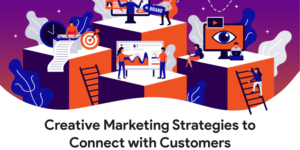
From ancient traditions of sharing experience and history, storytelling has turned into an essential part of modern marketing strategy. Now, within the digital landscape, companies are fast learning how much it is valued for their ability to connect with audiences on a deeper, more emotional level. But what does the real impact of storytelling in marketing look like? What do the numbers say? This article explains the most relevant storytelling statistics and their impact on engagement, brand perception, and customer loyalty. By truly understanding these figures, marketers will be better equipped with the power of storytelling to achieve their goals.
Why Storytelling Matters in Marketing
Before diving into all the statistics, let’s understand why storytelling still is such a powerful element in marketing. Humans have been wired to resonate with stories since this is how they make sense of the world and connect with others emotionally. When brands apply effective storytelling, they will be able to:
- Create deeper emotional connections among their audience.
- Boost brand recall and recognition.
- Influence customer trust and loyalty.
- Differentiate themselves from competitors.
These are not just anecdotal benefits, but a number of studies have attempted to quantify the effect of telling stories on consumer behavior. Let’s dive in and unpack some amazing statistics, showing just how important storytelling is in marketing.
The Role of Storytelling in Brand Engagement
Storytelling has played a very important role in audience building and audience engagement. This holds true even in the digital world, where attention spans are getting shorter. Brands can keep viewers glued to the screen for a longer period by adding stories to their content. A few statistics to show the same trend are shown here:
- Higher Engagement Rates: Stories in your content make them 22 times more memorable than just stating the facts. This is due to the fact that stories activate your brain and create emotional responses linked to memory.
- Video Storytelling Engages: Videos do a great job of telling stories. 83% of marketers believe that videos drive the best return on investment. A good video story can help get a message across fast, and that is why it should be in a digital marketer’s toolkit.
- Increased User Engagement: Stories are shared 30% more on social media platforms than their non-story counterparts. The shareability of stories means brands can scale organically through users’ interaction with their content.
Also Read: Elevate Your Brand with Innovative Digital Techniques
Storytelling’s Power in Customer Loyalty and Trust
For most brands, building a loyal customer base is their ultimate or long-term goal, and storytelling can be the turning point in their achievement. Because once the customers relate emotionally to the brand’s story, they are likely to stick by your brand and be testimonials to others. The following are some statistics to establish this fact:
- Customer Loyalty Increases: 55% of consumers who love a brand’s story are more likely to purchase products from that brand in the future. Stories let your customers create a sense of belonging and community; thus, customers can feel valued and understood.
- Trust Comes Through With the Stories: 73% of consumers said they would trust a brand more if that brand shared stories about its products and services or about its company values. Giving a human touch to the brand could provide companies with a deeper level of trust from their audience.
- Emotional Storytelling Boosts Sales: Studies have shown that emotionally charged stories can raise conversions as high as 38%. That is because emotions spur decisions, and a brand that can evoke just the right emotions by telling its story sees sales increase proportionately.
Storytelling in the Digital Era: How to Exploit Different Platforms

Not anymore, with digital platforms proliferating. Storytelling is not restricted to TV and print ads; instead, it has become an opportunity for brands to tell their stories across social media platforms, be it social media, podcasts, blogs, and even interactive websites. A few statistics that provide an idea about the reach of storytelling across platforms are listed below.
- Social Media Amplifies Storytelling: 95% of consumers want brands to produce ads that tell a story. Brands find new opportunities to share stories on Instagram, TikTok, and YouTube when using visuals to appeal to users.
- Podcasts as a Storytelling Medium: Podcast listenership has recently become mainstream, with more than 60 million American households tuning into podcasts. Podcasts are an essential tool for brands because they allow the formation of long-form, unique narratives with specific subsets of target audiences.
- Storytelling Through Blogs and Articles: Blog content that tells a story receives 300% more shares than those that do not. This proves that even written content can truly use a storytelling approach to help brands connect with readers and convey their message effectively.
But for a deeper understanding of how storytelling increases engagement for different forms of media, have a look at the piece below, which highlights a few general statistics about storytelling from around the world, with a more critical sense of its global effect, according to Pzaz.
The Science Behind Storytelling: Why It Works
Understanding why storytelling is such an effective process requires a little look at its psychology. Stories activate quite different parts of the brain from a straightforward data presentation. Here’s how storytelling captures the brain:
- Neural Coupling: When listening to a story, the brain is activated as if the events are being personally experienced. In this context, neural coupling refers to the way through which listeners connect on a personal level with the experiences of the storyteller.
- Dopamine Release: Emotional stories allow the brain to release dopamine, neurotransmitters that help remember. This is the reason why people will remember a well-told story much more than they would from a sheet of facts and statistics.
- Cortex Activity: Stories engage large parts of the brain: the sensory cortex, motor cortex, and frontal cortex. The multisensory engagement of stories by the brain enables listeners to view and feel a story while it is being unfolded.
Crafting a Compelling Story: Key Ingredients
While statistics prove the point of storytelling in marketing, creating an effective story requires a strategic approach. Here are key ingredients that make a story appealing to its audience:
- Authenticity: It has been identified that people love hearing and watching realistic stories. When brands start tweeting about their struggles, triumphs, and goals, they are able to form a better bond with the audience.
- Relatable Characters: Characters that a viewer can easily relate to are very important in the stories being presented. This link makes the story more interesting and easy to remember.
- Conflict and Resolution: This is a way of captivating the audience because a story with conflict and a proper resolution will Website: keep their attention. It offers a journey that keeps those hooked, making the resolution even more fulfilling and effective.
- Emotional Resonance: There is a rule that the most powerful stories always trigger emotions. It doesn’t really matter which emotion has been portrayed. Emotions are what make stories memorable.
Measuring the ROI of Storytelling
While it holds huge potential for returns, the investments in storytelling as part of a marketing strategy beg the question of what metrics to apply to gauge its effectiveness. The following is a set of metrics that help find the ROI of storytelling efforts.
- Engagement Metrics: These would involve tracking likes, shares, comments, and time spent on story-based content. High engagement levels indicate the story’s resonance with the audience.
- Conversion Rates: Actual conversion rates that come through direct interaction with the storytelling content, whether video ads or blog posts, should be observed. If one of the stories is highly converts, it means something is right.
- Customer Feedback: Judge by customer feedback and reviews to find out whether the story reflects values and meets the audience’s expectations. Positive feedback indicates how well an approach to storytelling works.
- Brand Awareness: Surveys or analytics tools will help us understand how much change in brand awareness and recognition is taking place. A well-structured storytelling campaign will increase a brand’s visibility and public perceptions.
Conclusion
Marketing is a field that abounds in popular keywords, and storytelling is no exception; however, it can be successfully used in practice as a powerful tool for establishing contact with the audience and achieving better outcomes. Regarding digital platforms, brands have more options than ever before with which to tell their stories to the world.
Using the findings of this article, marketers can better understand statistics to frame stories that make consumers emotionally moved by what is depicted in advertisements and bring long-term advantages. With such storytelling statistics and information in hand, businesses can comprehend how to set storytelling as a part of their promotional strategies and, therefore, create materials that will not only attract attention but will also engage people and create positive relationships with consumers.






